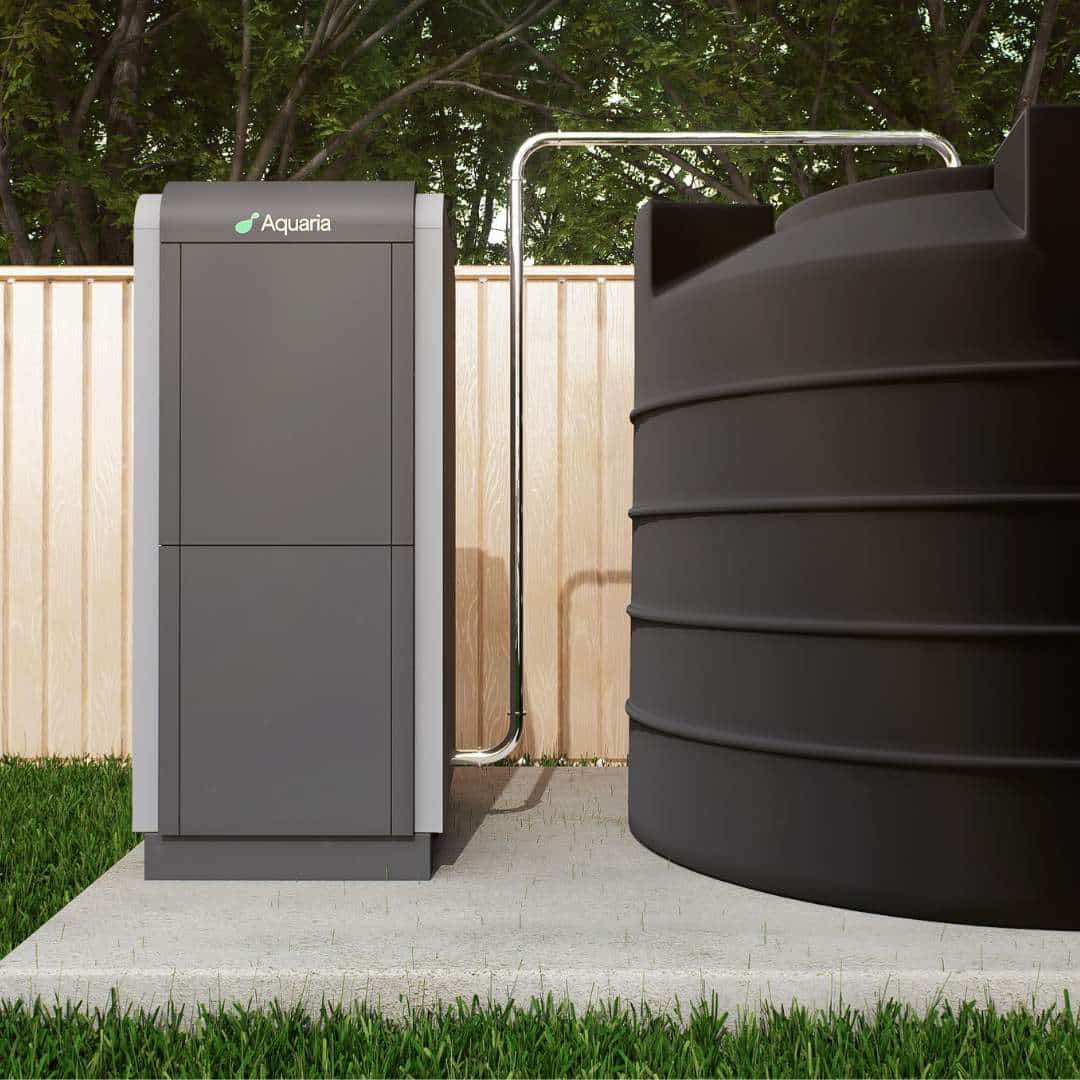What Are Atmospheric Water Generators and How Do They Work?

Atmospheric water generators are a revolutionary solution in our pursuit of clean, sustainable water sources. Global water scarcity intensifies as the world grapples with the twin challenges of climate change and geopolitical conflicts. Technologies like Aquaria’s atmospheric water generators shine as a beacon of hope for overcoming these challenges.
Unlike traditional water systems, Aquaria’s Atmospheric Water Generator creates water from thin air, offering a lifeline in areas where clean water is scarce or inaccessible. Our atmospheric water generator features an advanced heat exchange system that cools surrounding air to its dew point, which causes water vapor to condense into liquid droplets, similar to the formation of clouds. This harvested water undergoes a rigorous filtration process, making it pure and safe for consumption.
Understanding Atmospheric Water Generators
Aquaria’s atmospheric water generators operate on two simple yet profound principles: heat exchange and condensation. Air is drawn into the system, cooled below its dew point, and as it condenses, it forms water. This section will explain the refrigerant cycle— how it maximizes efficiency and the role of cutting-edge materials like graphene-metal composites in enhancing this process.
Atmospheric water generators utilize a sophisticated process known as refrigerant cycling to cool air to its dew point and extract water from the air. These machines draw in ambient air and pass it over a proprietary evaporator, where it encounters a cooler refrigerant. This interaction causes the heat energy from the air to transfer to the refrigerant, cooling the air to its dew point and allowing water vapor to condense into liquid. This liquid water then drips down, collects, and is filtered before being stored for consumption.
As the process continues, the warmed refrigerant vaporizes and moves to the compressor, which increases its pressure and temperature, pushing it into the condenser. Here, the exhaust air absorbs the heat from the refrigerant, cooling it back into a liquid while warming the exhaust air in the process. This heat transfer cycle repeats continuously, efficiently generating drinkable water from the air while ensuring the system remains energy-efficient and sustainable.
The Technology Behind Aquaria’s Clean Water Solutions
At the heart of Aquaria’s clean water solutions is the innovative use of heat exchange and condensation mechanisms within our atmospheric water generators. These machines draw ambient air across an evaporator, transferring the air’s heat energy to a circulating refrigerant. This refrigerant cycling cools the air to its dew point, allowing water vapor to condense into liquid. Once condensed, the water is channeled through a series of filters, ensuring its purity before it is deemed suitable for drinking. This seamless integration of cooling and purification showcases our commitment to providing clean, safe water.
The efficiency of this process hinges on the complete refrigerant cycle, designed to be both compact to fit within the machine’s framework and robust to handle large volumes of air. Given that over 75% of the energy used in our atmospheric water generator powers the refrigerant compressor, we have strategically focused on two main areas to enhance efficiency: increasing the water condensation rate per unit air volume and reducing the energy required for refrigerant cycling. These focal points are critical in optimizing the performance of our atmospheric water generators while minimizing energy consumption.
Engineering and materials science advancements have improved our atmospheric water generators’ functionality. We have incorporated a patent-pending heat pipe heat exchange system and developed components using a novel graphene-metal composite. These innovations not only enhance the thermal conductivity and efficiency of the heat exchange process but also significantly reduce the overall energy demands of the system. As a result, our latest models have achieved marked increases in water production capacity and have concurrently lowered energy usage, further cementing our role as a leader in sustainable water generation technology.
Efficiency and sustainability
Atmospheric Water Generators present a groundbreaking solution to the global challenge of clean water scarcity, leveraging the humidity present in the air to produce potable water. This technology is versatile, functioning efficiently across diverse climates—from arid regions to tropical settings.
The environmental impact of AWGs is minimal, making them a sustainable alternative to conventional water supply methods. Unlike bottled water production, which generates significant plastic waste, or large-scale desalination plants that require vast amounts of energy and can harm marine ecosystems, atmospheric water generators operate with relatively low energy inputs and produce no harmful byproducts. This aligns with the principles of sustainable development, as it reduces dependency on depleting groundwater reserves and minimizes ecological footprint. Visit our website to learn more about our technology.
Real use-case applications and impact
From rural communities in developing countries to advanced cities facing unexpected droughts, atmospheric water generators have a wide range of applications.
Below are some highlights of how Aquaria’s technology has been implemented worldwide, transforming lives and providing secure, clean water sources.
- Residential use-case – drinking water or whole home water.
- Commercial use-case – drinking water for offices, hotels, showrooms, factories.
- Real Estate developer use-case – water sources for homes that unlock land that can be developed on. For example, building a residential development on land without existing water infrastructure.
- Relief and impact use case – emergency water on demand after natural disasters
Future of Atmospheric Water Generation
Looking ahead, the potential for atmospheric water generator is limitless. Ongoing R&D efforts aim to refine and expand these systems’ capabilities, ensuring they meet the needs of a growing global population. Aquaria’s atmospheric water generators offer a promising solution to one of the most pressing challenges of our time: access to clean water. As we face global environmental changes, technologies like atmospheric water generators stand at the forefront of sustainable innovation.
Subscribe to our newsletter to learn more about our atmospheric water generation.

